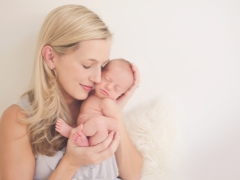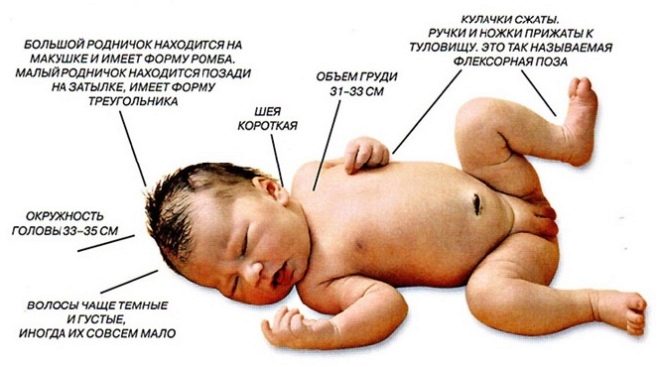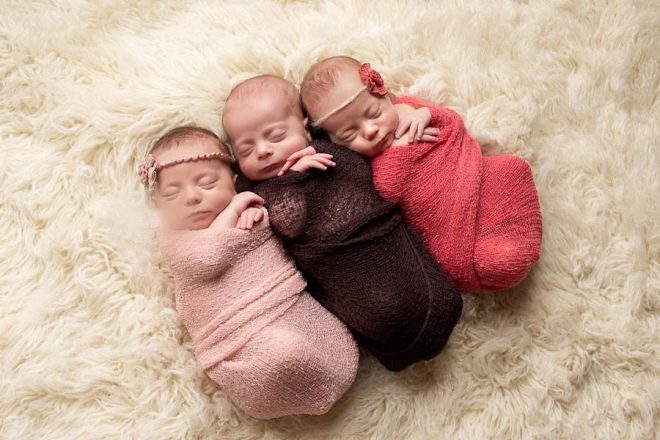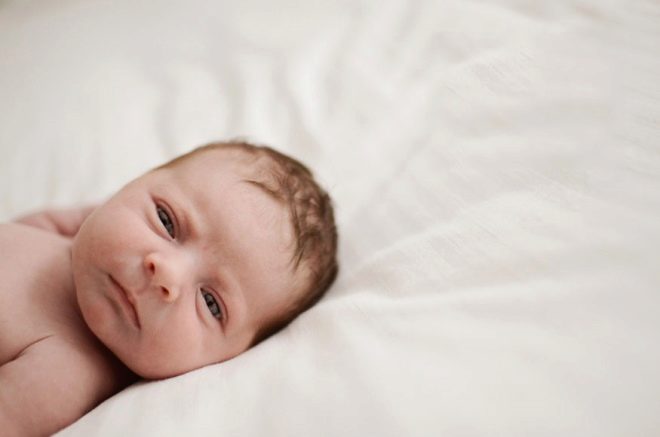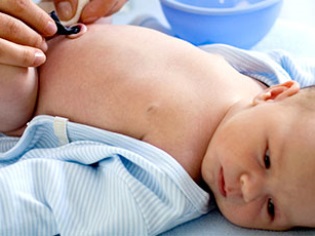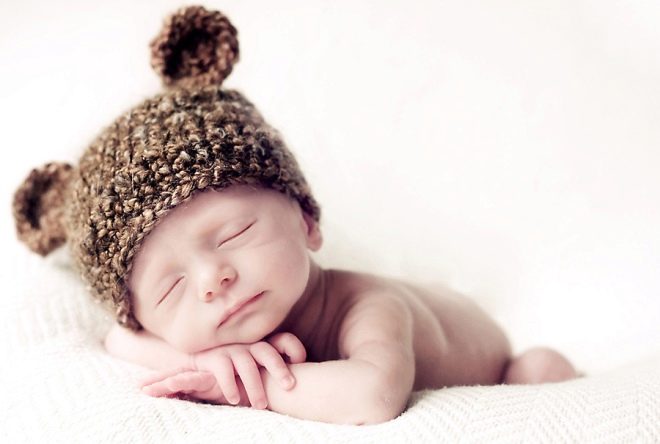What does a newborn look like?
The appearance of a newly born baby is different from the kind of pink toddler, which a woman contemplates in the pictures of magazines during pregnancy. But do not be afraid, because very soon the form of the crumbs will change. However, to avoid unnecessary worries, every pregnant woman should know in advance that it is the norm for the appearance of a newborn baby and should not cause a young mother to worry.
Head
The head circumference of a newborn averages 33-35 centimeters. Mom may be surprised that the head of a newborn is disproportionately large compared to the body. In addition, the baby's head may have an irregular shape. Most often, the head of the crumbs is oblong, as the baby passed through the birth canal. Do not worry, because after a few weeks, its shape will become round. Also note that in infants who were born with a caesarean section, the shape of the head does not change (does not flatten).
Many babies have swelling in the nape area during the first days after birth. It is called a generic tumor. The hair on a newborn's head is usually dark, but this does not mean that the child will remain dark-haired. They are often quite a lot, but some babies have quite a rare hair.
On the head of a newborn baby there are two fontanel. Most babies have a small spring. It can sometimes be found on the back of the head baby. The big spring is located on the top of the toddler and has a diamond shape. It can have various sizes (up to 3x3 cm) and the rate of its closing is individual for each child. Parents are afraid to touch the fontanel, but should not be afraid, because the spring is quite strong and you will not be able to damage it by washing your hair or brushing it.
Face
The face of the baby immediately after birth has a slight swelling, especially if the birth process was difficult. Cheeks can be squeezed and have a blue tint. The tip of the tongue of a newborn may appear to be split.
The newborn has a small nose, which is often flattened. At the tip of the nose, you may notice white or yellowish dots, which are fat glands, translucent under the thin skin of the toddler.
Eyes
At first, the eyes will be closed due to edema after childbirth, and the eyelids will be swollen, red or blue. Almost all newly born babies have a blue or gray tint. If the blood vessels burst during childbirth, the parents will notice redness on the eyeballs, but you don’t need to worry about it, because soon these red spots will disappear.
In a newborn, the crumbs of the eyes are dull, and the look as if is covered with a veil and constantly wanders.
The baby is trying to examine the surrounding objects, but it is not yet possible to focus his eyes. Also, in some babies, strabismus is detected immediately after birth, which passes by 6 months of age.
Tears at first after childbirth are absent. In addition, many babies do not have eyebrows and eyelashes.
Leather
On the body of the newborn, there is at first a lot of whitish substance, which is called the original lubricant. After rubbing the crumbs with oil, this substance is removed. Often, babies have very dry skin after giving birth. She may even begin to peel off in the chest and abdomen.
The skin tint of the baby born is normally reddish-bluish, and the skin itself seems very thin. Such a skin tone does not mean that the baby is cold. By the third day of life, the skin of the baby acquires a yellowish tint due to physiological jaundice.
On the shoulders and back of the baby, you can see thin hairs called lanugo. If the crumb is premature, such a gun on his body is much larger. Do not worry, these hairs will decrease and disappear in the first weeks of life.
Torso
At the torso of a newborn baby, such features are noted:
- Short neck and belly bulging.
- The infant's chest circumference is on average 31-33 centimeters.
- The toddler breast glands may be slightly swollen and milk may be released from them, which is normal and should not cause concern to parents (this condition is called a hormonal crisis).
- The newborn weighs an average of 3400-3500 grams (the weight of the boys is usually higher), and the growth of the baby averages 50 cm (the growth of the boys will also be greater).
Navel
A clip is applied to the umbilical cord during labor, and the small length of umbilical cord that remains under the clip usually dries up until discharge from the maternity ward. When the rest of the umbilical cord has disappeared, a small wound remains on the body of the crumbs, which bleeds and soon becomes covered with a crust. The hospital staff tells and shows the newly-made mother how to properly care for this wound.
Limbs
At first glance, the hands of a newborn are too long and constantly perform random movements. The cams of the newly born child are compressed, and at rest the legs and arms are pressed against the body (this is called flexor). Since there is almost no subcutaneous fat in the infant, you will see folded skin on your wrists.
In comparison with the hands, the legs of the crumbs look rather short. This impression is only enhanced due to their constant bent state. But the feet look very large.
The feet have a bluish tinge for some time, associated with the peculiarities of the circulation of the baby. The skin on the feet is also very thin and looks as if crushed.
The baby marigolds, though soft, are quite sharp and can leave scratches on the body of the crumbs, so immediately after birth they can be cut off. Only in premature crumbs, nails after childbirth do not protrude beyond the tip of the nail bed, so they have nothing to cut off.
Sex organs
The girl’s labia and boy’s scrotum may be red and swollen. This is normal and depends on the hormones released in the mother's body before the birth.
